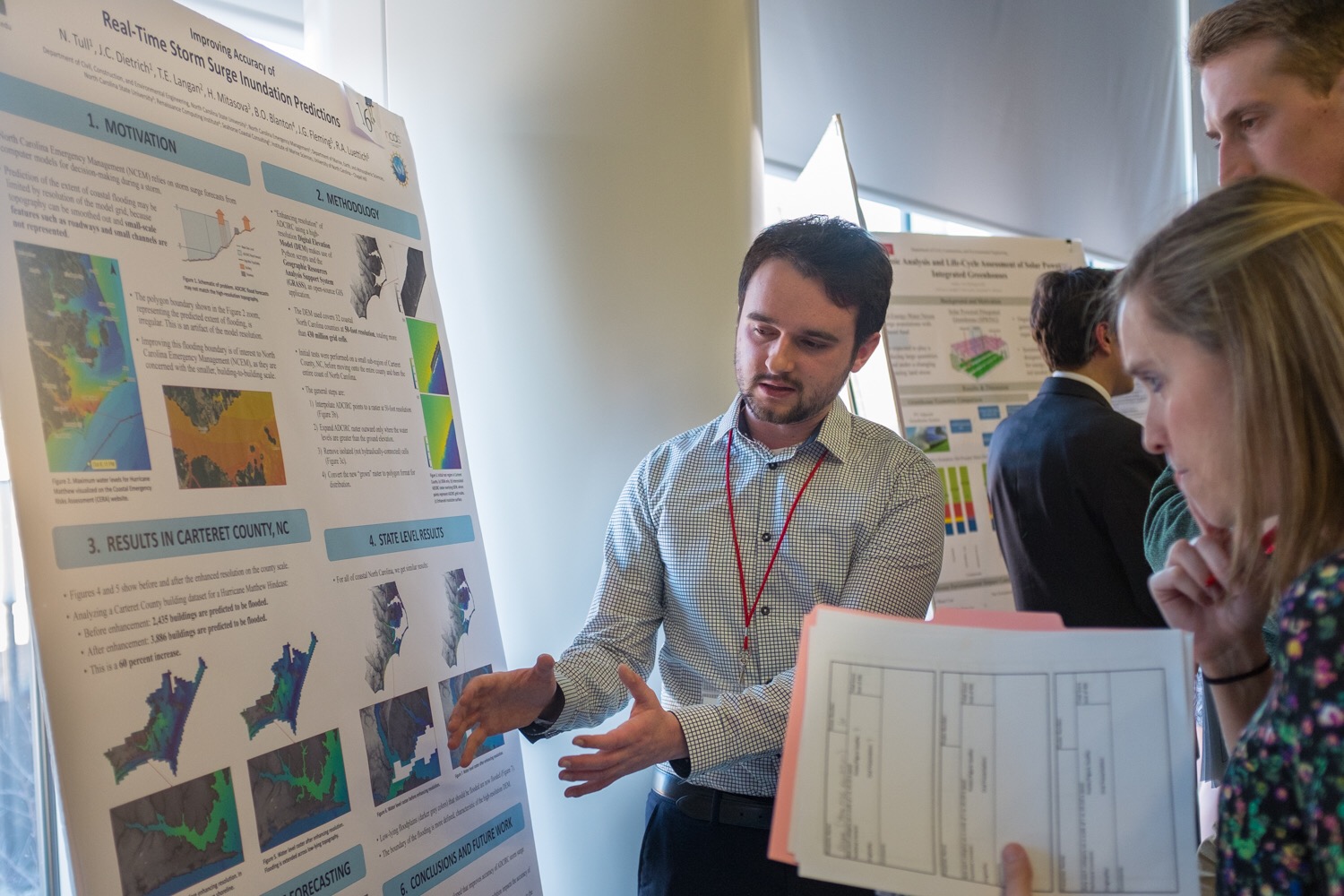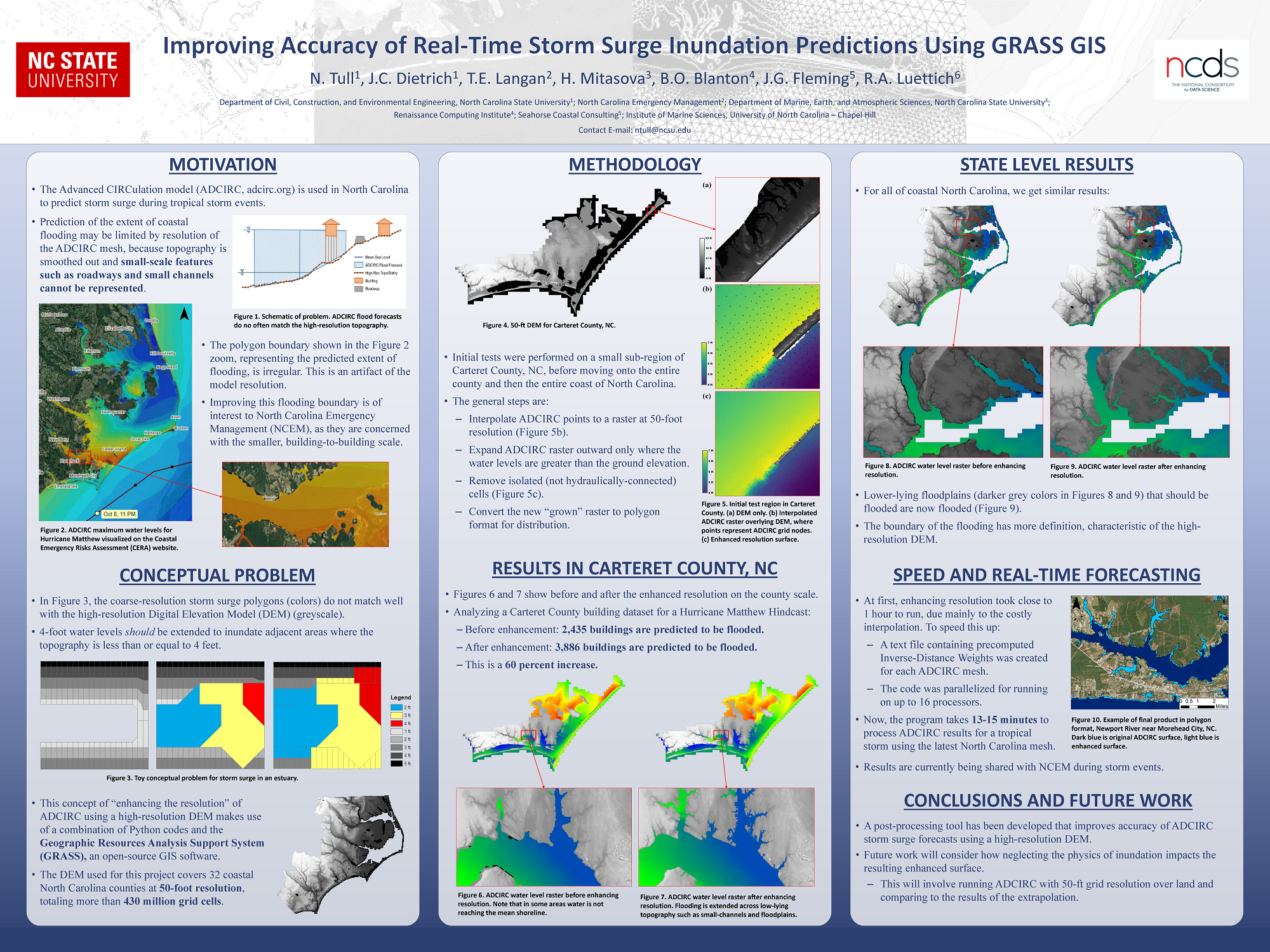Category Archives: NCDS Data Fellows 2016-2017
Improving Accuracy of Real-Time Storm Surge Inundation Predictions
A new tool has been developed that uses Geographic Information System (GIS) scripts to enhance the resolution of maximum water level predictions at the boundary of predicted flooding using a high-resolution Digital Elevation Model (DEM). The water levels predicted by the lower resolution model are extrapolated outward to where the water would intersect with the higher resolution elevation dataset. The result is a highly-refined flooding boundary that represents inundation on scales smaller than the typical ADCIRC mesh resolution. This tool can process a 15-m DEM for all 32 coastal counties of the state of North Carolina in less than 15 minutes during a storm event.
Comparison of results using spatial building datasets showed that for a simulation of Hurricane Matthew, 2,353 buildings were predicted to be flooded in Carteret County, NC, prior to enhancing resolution and 3,298 post-enhancement, an increase of 40 percent. In Dare County, the increase was 22 percent. This dramatic increase in flooded buildings shows the importance of achieving high accuracy in floodplains, as a relatively small change in predicted flooding extent can have a substantial impact on the predicted number of flooded buildings. The validity of these results was tested via comparisons to results of an ADCIRC model with the same 15-m resolution as the DEM in Dare County. Dare County is a coastal region with widely-varying topography and land cover, and preliminary comparisons have shown that the GIS method is accurate in coastal regions with steeper slopes and less accurate in flatter, low-lying areas.
Thesis Defense: Nelson Tull
Conference: ADCIRC 2018
Nelson and Ajimon win Student Poster Awards
PhD student Ajimon Thomas won Honorable Mention. Ajimon described his research to quantify interactions between tides and storm surge along the U.S. southeast coast during Hurricane Matthew.
This event is an annual showcase for research in our Environmental, Water Resources, and Coastal (EWC) engineering group, as well as a recruiting event for potential students. Awardees are selected by judges from other academic departments, government agencies, and consulting firms. Students presented their posters to judges and visitors during a poster session, and then finalists presented orally to the entire audience.
Congratulations to Nelson and Ajimon!

Nelson Tull shares his poster with judges at the 2018 EWC Research Symposium.
Posters: EWC Research Symposium 2018
N Tull, JC Dietrich, TE Langan, H Mitasova, BO Blanton, JG Fleming, RA Luettich. “Improving Accuracy of Real-Time Storm Surge Inundation Predictions.” Environmental, Water Resources, and Coastal Engineering Research Symposium, North Carolina State University, 2 March 2018.
Nelson wins Student Poster Award
Congratulations to Nelson!

Nelson Tull accepts the Student Poster Award during the awards luncheon at the ASBPA National Coastal Conference.
Poster: ASBPA Coastal Conference 2017
N Tull, JC Dietrich, TE Langan, H Mitasova, BO Blanton, JG Fleming, RA Luettich. “Improving Accuracy of Real-Time Storm Surge Inundation Predictions Using GRASS GIS.” ASBPA National Coastal Conference 2017, Fort Lauderdale, Florida, 25 October 2017.



